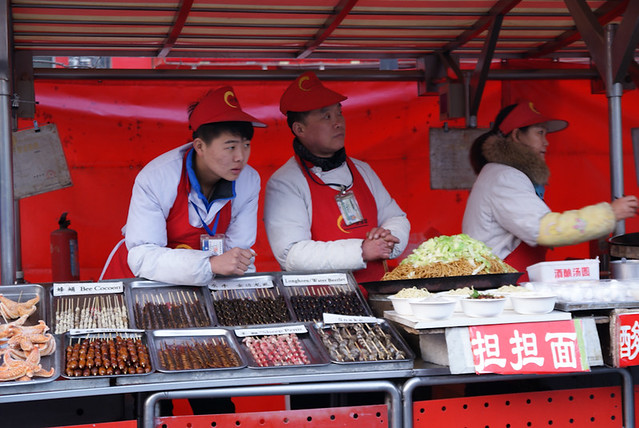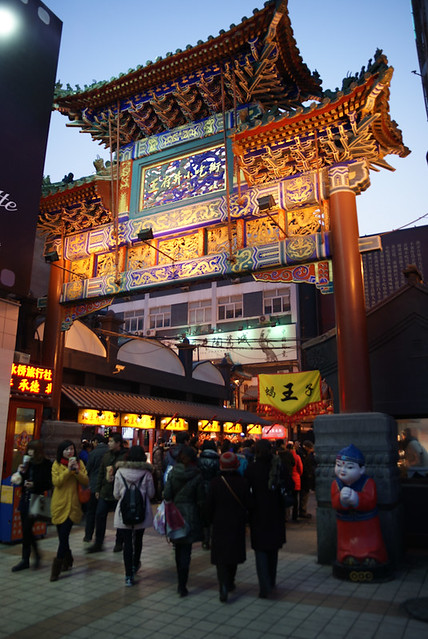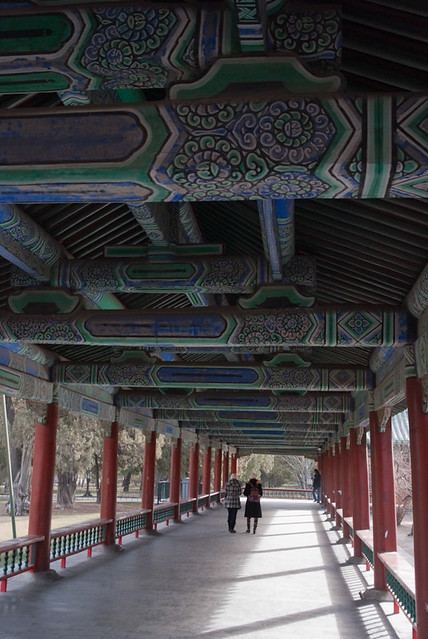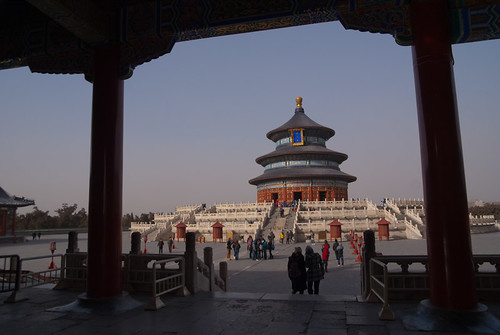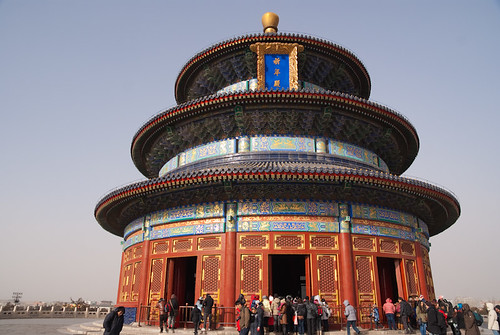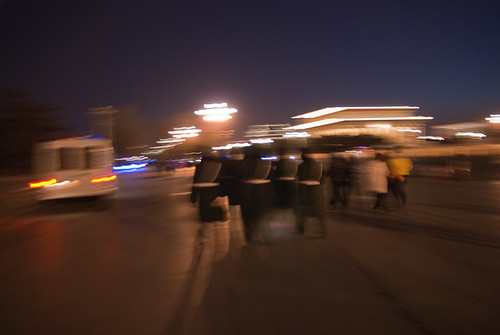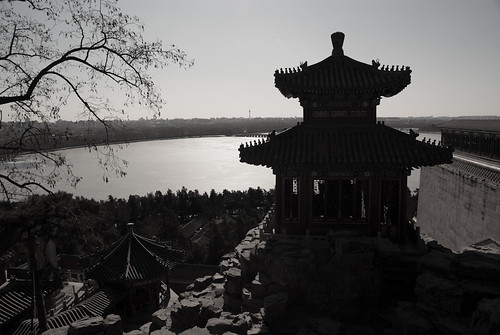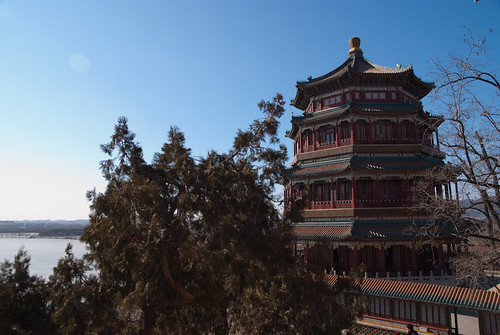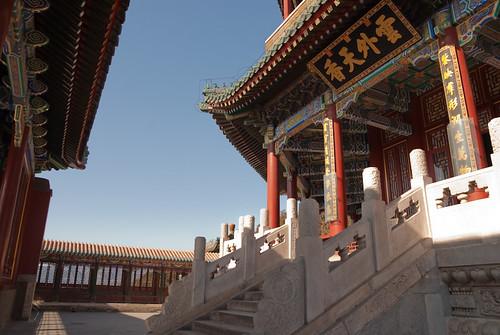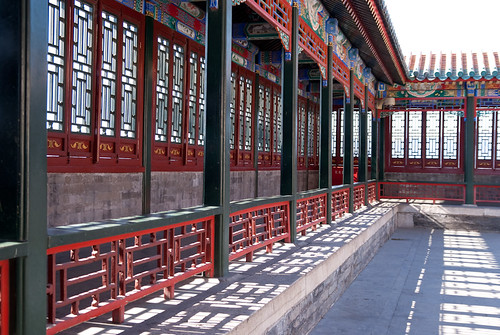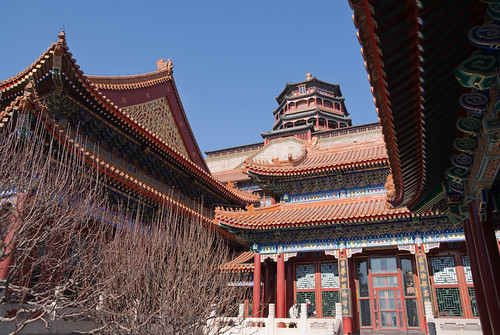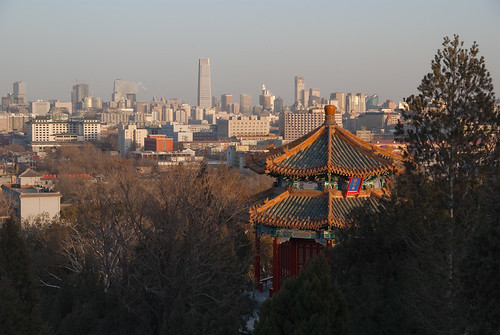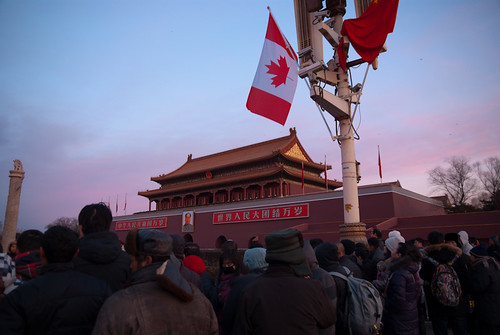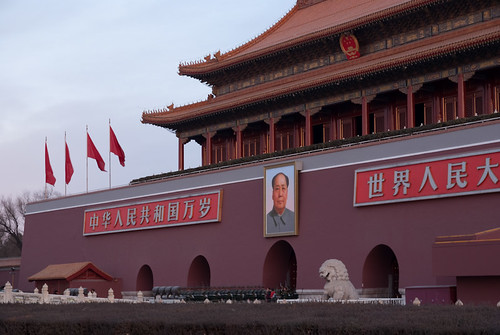WE'VE MOVED!!!!!!
Monday, 5 August 2013
ANCIENT CHINA IN MODERN BEIJING
 Adventures of two bananas in the Capital
Adventures of two bananas in the Capital
Last time I visited Beijing
I was 4 years old and I ran off in Tiananmen Square
looking for bullet holes (which led to homemade personal locating devices
attached to me for the reminder of the trip... aka little bells around my wrist).
Oh yeah, I also "spoke" Chinese back then.
From my recollection Beijing
was a sterile and oppressive city (possibly because my parents and I visited
not too long after the infamous Tiananmen Square
incident). My memories of Beijing
consisted of endless bicycle traffic with occasional motorbikes (cars and buses
were few and far between); ice-sledding/tobogganing on a frozen lake (courtesy
of nice Beijing locals); climbing the Badaling great wall in tears but got a
“Great Wall conqueror” certificate; and my first encounter with snow.
Fast forward 20ish years my Chinese language skills remained atrocious
(shameful would be another word that would describe my Mandarin), and this time
I took my wife with me to hike the Great Wall of China. My wife, a third-generation Chinese-Canadian
who is fluent in English and French, turned out to be less useful in
communicating with the locals than I had hoped.
So during our 5-day trip to the Capital we were essentially two bananas
traveling in Beijing
where everybody expected us to converse in Chinese – which led to some
memorable experiences. (banana: yellow
outside, white inside)
Itinerary: (Beijing
was a side-trip… we were not crazy enough to fly to Asia from Canada for a
3.5 day trip)
DAY1: (fly in) Vancouver to Beijing
DAY2:
Temple of the Heavenly, Tiananmen
Square
DAY3:
Summer Palace,
Jingshan Park
DAY4:
The Great Wall of China (JinShanling)
DAY5:
Flag raising ceremony in Tiananmen Square (fly
out)
We hailed a taxi to usher us straight to our hotel from the airport. We were able to negotiate a fixed price with the taxi driver in order to deter any possibilities of fare-gauging. The domestically-built taxi then raced through tolled expressways like a German-built sports car (without the comfort, style, or safety features). As we frantically search for our seat belts we were joined by countless Fords, Volkswagens, and Audis just like any highways back home. As we approach Beijing I realized that all the bicycles I saw 20 years ago had been replaced by automobiles, and modern commercial buildings stand in places where hutong residences dominated 20 years ago.
We arrived at our reasonably priced hotel (Hotel Kapok) with above average reviews at the heart of the capital. The hotel staffs were courteous and they escorted us to our hotel rooms after check-in (they photocopied and registered our passports – I later learned that there are different classes of hotels in China: For foreign visitors, for Hong Kong/Macau/Taiwan guests, and domestic travelers. Needless to say the ones for domestic travelers were the least desired). Hotel Kapok was ultra modern with all the basic amenities any travelers would expect, plus glass walls for the bathroom (with curtains if one wished for privacy) – my privacy-loving wife did not appreciate such added “luxury” haha.
After settling in it was near dinner time and we ventured out on foot to explore the streets around our hotel and we wandered toward Wangfujing street (or Wangfujingdajie). [I found the inconsistencies in English translation all over China (not just Beijing) confusing because one thing could have 3-4 different translations… i.e. Wangfujing Street VS Wangfujingdajie. At least I could make out dajie = big street, but what about those poor non-Chinese visitors?]. We passed a busy street full of food vendors selling all sorts of “exotic delicacies” to locals and tourists – for under $5 CAD anyone could enjoy the taste of bee cocoons, beetles, scorpions, starfish, snakes, or sheep’s penises. Unfortunately I didn’t know I would start travel blogging at the time, or I would’ve totally whore my stomach out for some extra page views/comments. We ended up stopping by a seemingly famous dumpling restaurant (food staple of the northern Chinese). At the restaurant my wife experienced her first Chinese culture shock: Squat toilets. As a dude it really doesn’t matter whether it was a bush, a bottle, or any permutations of a toilet because I pee the same way… but I guess females are different... In fact my wife refused squat toilets throughout the entire trip and she purposely dehydrated herself on longer day trips.
DAY 2: TEMPLE OF THE HEAVENLY + TIANANMEN SQUARE
Our first attraction of the day was Temple of the Heavenly (also known as Temple of the Heaven, or Tiantan which means sky altar… see what I mean by translation inconsistencies?). On our way to the subway station we were surprised at how well-dressed and stylish some Beijing locals were (i.e. Well fitted suits, nice tasteful dresses, etc). At the same time we were also surprised at how locals were always battling with phlegm because throat clearing/spitting seemed to be widely accepted even when performed in public (must be the bad air quality). Beijing’s metro system was modern, clean, and most importantly simple. During our stay we were able to navigate on public transits to most destinations relatively inexpensively.
The metro exit led us close to the east gate of the park. The entrance fee to the park was modest, and we were able to use our Canadian university ID for a slight discount. Once inside we were treated to a harmonious balance of red, green, and blue that defined this UNESCO heritage site built in the Ming dynasty (600 years ago!). The park was extremely popular for the local population and it seemed to be the epicenter for community get-togethers. As we passed through the long corridor that led to the altar we found the park buzzing with activity even in the middle of winter. We were surrounded by laughter and chants from locals playing traditional games such as Jianzi (Chinese hacky sack) and Chinese chess.
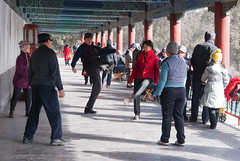
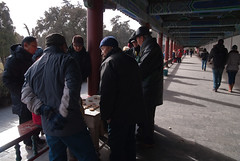 The composition of park visitors favored tourists the further we continued down the corridor and we were finally treated to a familiar yet impressive view: The Hall of Prayers for Good Harvests (aka the altar). To my disappointment the altar was blocked off this time around (I remember there were no restrictions last time I was there two decades ago). At the same time we were fortunate because we visited during winter months and there were relatively fewer tourists to compete for a glimpse of the interior through opened doors. The wind seemed to have picked up and I had my first encounter with the ridiculous Beijing chill. Armed with 3M Thinsulate gloves and a proper winter coat I still felt as if I jumped into Arctic waters wearing only my birthday suit. With semi frozen tears and snot continually running down my face, I decided to press on to see the other portions of the park… 15 minutes later I conceded to the wind and was forced to seek shelter (and purchased heat packs from the park store).
The composition of park visitors favored tourists the further we continued down the corridor and we were finally treated to a familiar yet impressive view: The Hall of Prayers for Good Harvests (aka the altar). To my disappointment the altar was blocked off this time around (I remember there were no restrictions last time I was there two decades ago). At the same time we were fortunate because we visited during winter months and there were relatively fewer tourists to compete for a glimpse of the interior through opened doors. The wind seemed to have picked up and I had my first encounter with the ridiculous Beijing chill. Armed with 3M Thinsulate gloves and a proper winter coat I still felt as if I jumped into Arctic waters wearing only my birthday suit. With semi frozen tears and snot continually running down my face, I decided to press on to see the other portions of the park… 15 minutes later I conceded to the wind and was forced to seek shelter (and purchased heat packs from the park store).We left our itinerary open intentionally for the rest of the afternoon because I didn’t know if we would be excited enough to visit the Forbidden City (I know it is supposed to be a must-see… being another UNESCO heritage site that defines China). I had already visited the imperial palace when I was little and I actually had a chance to go inside the main hall as there were no visitor restrictions when I last went (similar to Temple of the Heavenly). The last time I visited I also met the last living eunuch from the Qing dynasty (he was 102 years old 20 years ago… I don’t know why I remembered since it was uneventful). Since my wife had never been to the palace we took the subway back to Tiananmen Square (the Forbidden City was in its vicinity) so she could visit this Chinese symbol. However, the amount of visitors who lined up for tickets probably made the queue at the Louvre laughable so we quickly abandoned the idea. Instead, we casually strolled around possibly the most monitored piece of real estate in the world – Tiananmen Square. There was a strong visible presence of armed soldiers and policemen; furthermore, there were numerous CCTVs mounted to each light post. On a lighter note, there were also Canadian flags on every single light post! (I guess I am kind of a big deal hahaha, Stephen Harper’s visit had NOTHING to do with it).
DAY 3: THE SUMMER PALACE + JINGSHAN PARK
Upon entry to the Summer Palace we were greeted by hundreds of lanterns overhead. The imperial summer retreat/garden was gigantic and since we didn’t want to spend an entire day there, we decided to limit our visit to the northern and eastern portion of the palace where most structures were concentrated (yet still a healthy distance to cover). We were visiting a summer retreat in the middle of winter, the central Kunming Lake was frozen solid and the temperature was a few degrees below anyone’s comfort (we supplemented our attire with thick winter jackets and face-warmers).

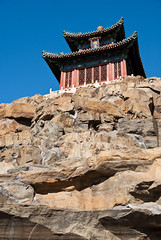
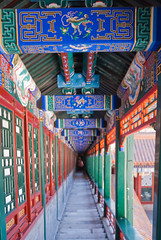 One of the main attractions in the summer palace was the Tower of Buddhist Incense (aka Foxiangge) located at the top of Longevity Hill. At the top we were treated to a wonderful panoramic view of the entire Kunming Lake and the surrounding structures. The view was further enhanced when I realized that Kunming Lake and Longevity Hill were entirely man-made centuries ago without the aid of machineries. The architecture style of the summer palace was similar to Temple of the Heavenly where the wooden structures were painted in a mix of harmonious red, blue, and green. The Tower of Buddhist Incense was an engineering marvel considering the height of the structure and the material used to reach such height (wood). In addition, the entire complex also doubled as an art exhibit because there were unique paintings on each overhead beam. The meticulous artwork, the ingenious engineering, and the grand landscaping propelled this ancient imperial retreat onto the UNESCO heritage list. However, this structure also represented a painful chapter in Chinese history because this extravagant palace was built from diversion of military funds which eventually led to successful occupation of China by foreign militaries.
One of the main attractions in the summer palace was the Tower of Buddhist Incense (aka Foxiangge) located at the top of Longevity Hill. At the top we were treated to a wonderful panoramic view of the entire Kunming Lake and the surrounding structures. The view was further enhanced when I realized that Kunming Lake and Longevity Hill were entirely man-made centuries ago without the aid of machineries. The architecture style of the summer palace was similar to Temple of the Heavenly where the wooden structures were painted in a mix of harmonious red, blue, and green. The Tower of Buddhist Incense was an engineering marvel considering the height of the structure and the material used to reach such height (wood). In addition, the entire complex also doubled as an art exhibit because there were unique paintings on each overhead beam. The meticulous artwork, the ingenious engineering, and the grand landscaping propelled this ancient imperial retreat onto the UNESCO heritage list. However, this structure also represented a painful chapter in Chinese history because this extravagant palace was built from diversion of military funds which eventually led to successful occupation of China by foreign militaries.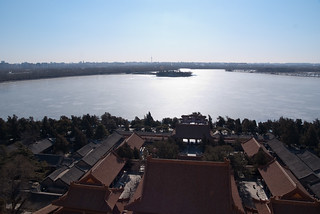
 As we descend from Longevity Hill we reached Long Corridor by the lake (aka Changlang/ Long Gallery). Continuing the architecture style of the summer palace, Long Corridor also featured countless colored paintings on overhead cross-beams. We continued down the corridor and there were only a handful of other tourists (a perk when visiting during winter months I suppose) until we reached another symbol of frivolous spending: A marble two-story boat. We were getting hungry by that point so we exited out of the closest gate (east gate). To our surprise it was a 15-20 minute walk from the east gate to the closest metro station (Xiyuan station), and unfortunately there were no restaurants along the way. By the time we traveled back into the city center and had our empty stomach filled, there were only a couple hours of daylight remaining.
As we descend from Longevity Hill we reached Long Corridor by the lake (aka Changlang/ Long Gallery). Continuing the architecture style of the summer palace, Long Corridor also featured countless colored paintings on overhead cross-beams. We continued down the corridor and there were only a handful of other tourists (a perk when visiting during winter months I suppose) until we reached another symbol of frivolous spending: A marble two-story boat. We were getting hungry by that point so we exited out of the closest gate (east gate). To our surprise it was a 15-20 minute walk from the east gate to the closest metro station (Xiyuan station), and unfortunately there were no restaurants along the way. By the time we traveled back into the city center and had our empty stomach filled, there were only a couple hours of daylight remaining.Instead of visiting the Forbidden City, I had done some research the night before and I came across a park right behind the Forbidden City which offered a fantastic 360 degree view of Beijing including the imperial palace. Once again we traveled by public transit and we found that not only were Beijing buses efficient, navigating on the bus was easy as well (there was a display in both Chinese and English indicating the next stop). Once we arrived at Jingshan Park (and of course after another small entrance fee… nothing is free in Beijing) it was clear where we should go… up the hill.
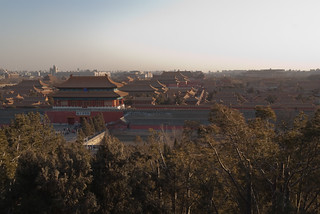
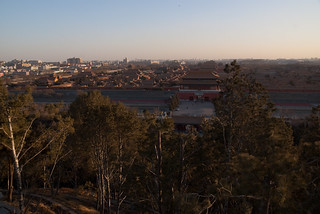 Jingshan Park was originally an imperial garden (and part of the Forbidden City), we saw a group of locals practicing taichi and line dancing. It seemed synchronized activities such as line dancing/morning stretches are popular in Beijing because during our brief visit we encountered countless such activities. As we walked up the hill there was a gazebo 3/4 up the hill with an amazing view of the modern Beijing with its skyscrapers, and a short distance from the gazebo was the main lookout. By the time we reached the lookout the sun casted a golden orange hue over the entire city, and the entire Forbidden City was in front of our eyes unobstructed. (I will let the pictures do the talking). We concluded our day with fireworks as locals celebrated the lunar new year and festivities radiated throughout the city.
Jingshan Park was originally an imperial garden (and part of the Forbidden City), we saw a group of locals practicing taichi and line dancing. It seemed synchronized activities such as line dancing/morning stretches are popular in Beijing because during our brief visit we encountered countless such activities. As we walked up the hill there was a gazebo 3/4 up the hill with an amazing view of the modern Beijing with its skyscrapers, and a short distance from the gazebo was the main lookout. By the time we reached the lookout the sun casted a golden orange hue over the entire city, and the entire Forbidden City was in front of our eyes unobstructed. (I will let the pictures do the talking). We concluded our day with fireworks as locals celebrated the lunar new year and festivities radiated throughout the city.DAY 4: THE GREAT WILD WALL OF CHINA (JINSHANLING)
Additional photos can be found here as well!
As we return from our mini road trip our driver Joe was kind enough to detour to the Olympic grounds so we could have a glimpse of the “birds nest” National Stadium before he dropped us off at the trendy Houhai district for dinner. Houhai district was filled with restaurants, bars, and karaoke shops. We were going to chill-lax at a pub after dinner, but since my wife refused to use squat toilets her dehydration tactic was only successful for about 12 hours… we hailed a taxi (with great difficulty) and headed back to our hotel.
DAY 5: FLAG RAISING CEREMONY -> AIRPORT
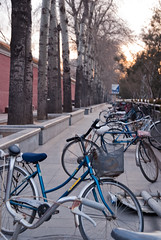 Our flight was scheduled in the early afternoon so we did not have much time to sightsee that day. In fact even if we went sightseeing we wouldn’t see much because the smog was terrible. We were lucky that the majority of our trip was under beautiful blue skies (at least we could see the sky lol) because I would be quite bummed if all I could see were my immediate surroundings.
Our flight was scheduled in the early afternoon so we did not have much time to sightsee that day. In fact even if we went sightseeing we wouldn’t see much because the smog was terrible. We were lucky that the majority of our trip was under beautiful blue skies (at least we could see the sky lol) because I would be quite bummed if all I could see were my immediate surroundings.My mom and I woke up extra early (before sunrise early) so we could see the flag raising ceremony in Tiananmen Square. A small platoon of soldiers marched in unison carrying the Chinese flag to its destination (honestly it must be a communism thing because they take their marches seriously… they made changing of the guards at Buckingham palace look amateur). The Chinese national anthem resonated throughout the square as the flag climbed to the top of the flag pole and the entire flag raising experience was great. (IN MY OPINION… Out of all the national anthems I have heard, only the American, Russian, and Chinese anthem conveyed a strong sense of national pride behind powerful melodies…). The flag-raising experience would’ve been perfect if I didn’t have to look at Chairman Mao’s gigantic smug portrait above the Gate of Heavenly Peace.
On our taxi ride to the airport we were greeted by an ultra talkative local Beijing driver. He was a loud, honest, and warm personality that I had associated Beijing with. He was proud of his heritage and he made sure that we knew he was local (he lived in a hutong just a couple blocks from our hotel and he could easily sell the property for millions, but because he wanted Beijing to maintain its heritage he refused to sell out to another condo developer. Apparently Beijing was also flooded with “uncivilized foreign migrant workers” which he deemed unfortunate). The taxi driver insisted that I try speaking Chinese to him (he deemed my wife a lost cause haha). After about 30 minutes in gridlock traffic it turned out the police had shut down traffic for a mid level government official… seriously!? Because of the traffic jam we were running late for our flight and our local driver was determined to deliver us to the airport on time (alive or not). It seemed like he turned on the “Chinese driving” switch and we found ourselves traveling at high speeds on every part of the pavement (median, in between lanes, curb-side, etc). By the end of the taxi ride we were actually conversing in Mandarin (Me = extremely broken Chinese but at least he understood, or pretended to understand) and my wife was suffering from motion sickness. Needless to say because of our taxi driver’s determination we managed to catch our flight.
Conclusion
Beijing had graced us with a mix of western familiarity along with its deep-rooted eastern culture. We had seen and experienced the variety of Beijing’s food culture, from the world famous Peking duck to local dumplings (but we were too scared to try scorpions and starfish). It was abundantly clear that the Beijing I visited two decades ago had transformed into a world class cosmopolitan. The evidence of such rapid development could be seen at every corner of Beijing as old traditional hutongs struggle to survive in a sea of new concrete developments. Beijing is now a modernized city by most western standards, and in my opinion it is equally important to embrace its rich ancient heritage going forward. However despite all the cosmetic changes throughout Beijing, one thing did remain constant: the welcoming and warm personalities of the Beijing people.
About the Author

...Armed with a camera, I am able to document my hobbies and passions in life as I strive to complete my bucket list.
...Armed with a digital pen (aka keyboard), I am hoping to inject narratives into these pictures to describe experiences.
...Armed with this blog, I am able to share these wonderful experiences and adventures with YOU!
Your comments and support are my biggest motivation! Leave a comment below or visit us on Facebook!

